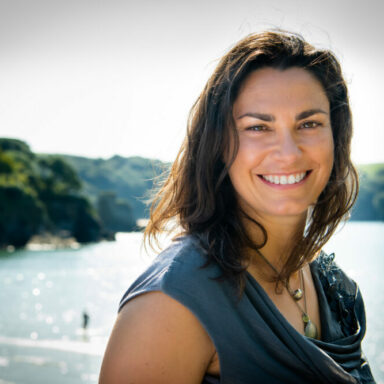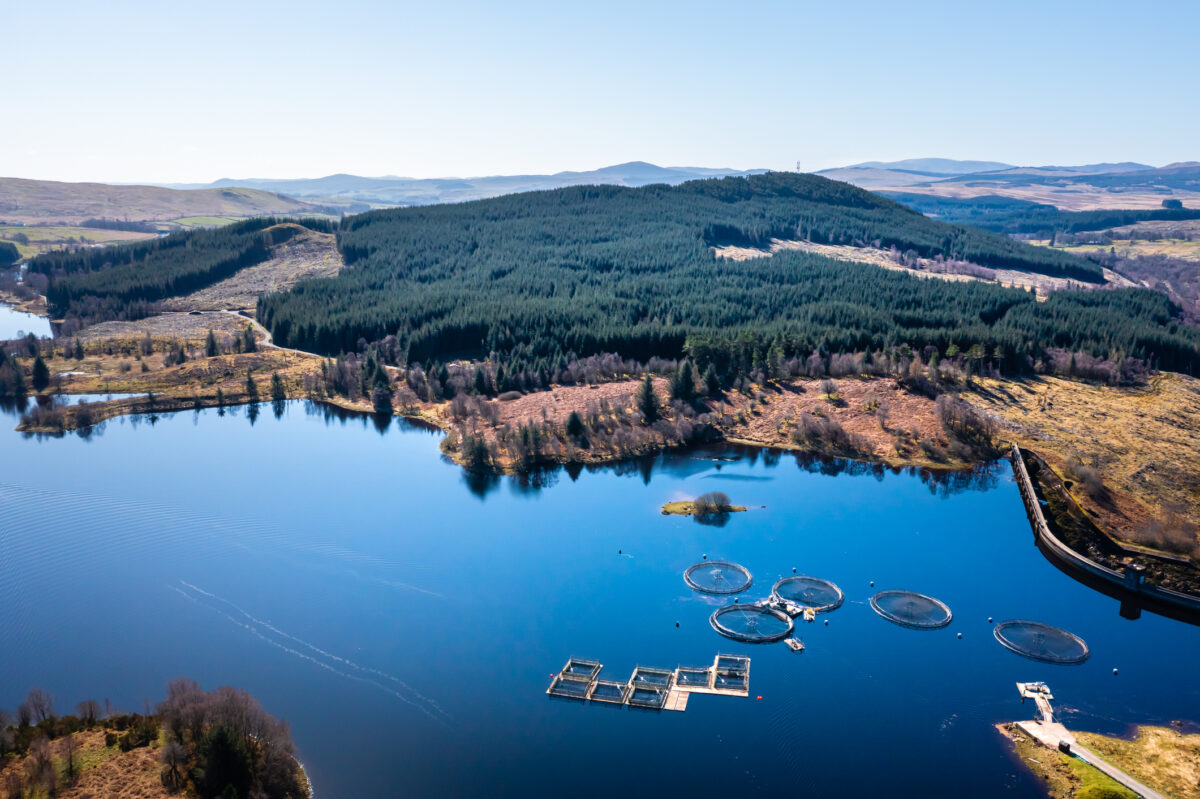The rapid growth of aquaculture and the innovations ensuring its sustainability

Aquaculture, the cultivation of aquatic animals and plants in both saltwater and freshwater, includes the farming of fish, prawns, oysters, mussels, octopus, sea cucumbers and seaweed.
This is the fastest growing food industry in the world and is set to more than double by 2050 according to the World Resources Institute, with the emphasis on the need for that growth to be sustainable.
Aquafoods could contribute 40% or more of the world’s projected protein needs; that’s about 550 million tonnes, according to the UN’s Food and Agricultural Organization blue transformation strategy. The beauty of this big blue revolution perhaps lies in the three-dimensional nature of the ocean. Because aquaculture can produce a much bigger volume of farmed animals within one cubic km of sea than on the same area of land, yields can be much higher and aquafarms are considered by the World Economic Forum to be more efficient than terrestrial farms. Aquaculture may well prove to be more resilient in the future too – the temperature conditions in the ocean are more buffered and less prone to extreme fluctuations so perhaps less vulnerable to climate shocks.

Octopus

Sea cucumber
Left: Octopus
Right: Sea cucumber
Nicholas P. Sullivan, author of The Blue Revolution: hunting, harvesting and farming seafood in the information age, states that “farmed fish are increasingly important to global food security because the wild catch has been flat for 30 years”. Sustainable aquaculture could reduce pressure on wild capture fisheries, yet any farming, whether that’s on land, in rivers or at sea, has an environmental footprint. Making aquaculture more efficient, productive and sustainable is the way forward and in 2018, farmed fish accounted for 52% of global fish consumption and overtook fisheries as the main source of fish for human consumption for the first time.
Let’s dive in and take a look at some of the most exciting eco-innovations that are advancing large-scale sustainable seafood production in the UK. Systems are becoming more circular, supply chains are getting shorter, technology is getting much more savvy and offshore farming, which is the Holy Grail for many entrepreneurs according to Sullivan, is making waves too.
Into the deep
John Holmyard runs Europe’s first offshore rope-cultured mussel farm, six miles off the south coast of Devon. Currently, Offshore Shellfish harvests 2000 tonnes of live mussels every year, with scope to expand to produce 10,000 tonnes, exceeding the yield of Scotland’s entire mussel industry. “The chief reason for us going offshore is to get the space,” he explains. “Everyone wants to sail their dinghies or flush their toilets into inshore waters – with more space we could go to a much bigger scale which enables us to tap into big export markets.” The mussels are growing better because the conditions are more constant than in a tidal estuary for example. As Holmyard explains, there are no sudden changes in salinity or temperature and the mussels are under the water and able to feed all the time. “We hadn’t fully expected the productivity in terms of meat content to be quite so high – when we [previously] produced in Scotland it was around 22% meat, last year at their peak, ours reached nearly 49% meat. So per tonne of mussels we’re producing an awful lot more actual food than you would from an inshore farm.”
There are environmental benefits too. Native blue mussels are grown on a series of 240 floating lines anchored on the seabed 20-30 metres beneath the waves, without the need for any additional chemical inputs. This structure creates the base for a complex ecosystem and biodiversity is increasing within the farm, while the mussel shells act as a carbon sink. On the ropes alone, studies have found more than 60 different species of worms, sea squirts, anemones, crabs, shrimps and seaweeds.
Llucia Mascorda Cabre, a marine biology PhD student at University of Plymouth, is studying how the biodiversity in the sea and on the seabed is changing within the mussel farm. “We’ve seen there has been an increase by a third of fish and shellfish that move – now, through our video monitoring, we’re seeing shoals of black bream, seabass, whiting, mullet and even some tuna. This sheltered habitat acts as a nursery for baby scallops and crabs too,” she says. This ‘spillover effect’ boosts marine life and fish stocks. “As crabs are moving out from the mussel farm and fishermen are potting right outside the farm.” This area had been heavily trawled in the past and the seabed had been ‘decimated’, according to Mascorda Cabre. “There has been a significant change in complexity of the sediment too – partly because trawling has stopped, and partly because this mussel farm is increasing the rate at which the seabed is recovering.” So this form of sustainable aquaculture is a great strategy for ocean regeneration in the right locations.
Waste not, want not
“Aquaculture is the key for feeding the world with enough nutritious food and the use of by-products [within the industry] is changing,” says Libby Woodhatch, executive chair of MarinTrust, the governing body for marine ingredients, many of which are used to make aquaculture feed. She explains that about a third of fish meal globally comes from by-products such as trimmings, bones and heads that are leftover once fish have been processed for human consumption. “We don’t like calling those by-products waste – that perception is changing and now it’s about full utilisation [of the fish],” says Woodhatch. “We want to improve the perceived value of these by-products…then the systems to collect it, store it and manage it will then improve.”
So much data is collected about fish – where and when they were caught, which skipper landed them, and so on. But that information about the trimmings has, until now, been lost and essentially thrown away. “Now, there’s a global move to keep that information.” By its very nature, the aquaculture industry is fragmented so a crucial step is to make sure all parties are providing accurate, consistent data. That’s exactly what the Global Dialogue for Seafood Traceability is doing. This WWF-run platform ensures the reliability of seafood information through the use of ‘key data elements’ – specifics about where a product was caught, for example – that stay in place all the way throughout the supply chain until a product reaches the retailer or fish meal plant, for example. Supply chains are becoming much shorter too. In Peterhead, north-east Scotland, a company called Lunar that catches and processes fish has just built its own fish meal plant, so they can use their own by-products on-site to produce feed for salmon farms, for example.
Feeding fish: flies, soy and hemp
When it comes to the contents of fish food, as Woodhatch explains, ultimately fish eat fish – but she adds that the proportion of marine ingredients has reduced over the years. “You can’t remove marine ingredients, that is what fish need to thrive and survive and provide nutrient rich food,” she says. But fish feeds can include a list of about 80 ingredients that are produced all around the world, including concentrated soy protein. Scientists are researching suitable low-carbon alternatives such as black soldier flies that feed on food waste, and also hemp seeds which are a by-product from hemp plant production for textiles and building materials and so on.

Rare Earth Global’s hemp crops

Algae
Left: Rare Earth Global’s hemp crops
Right: Algae
With support from the Sustainable Aquaculture Innovation Centre and the University of Stirling’s Institute of Aquaculture, industrial hemp producer, Rare Earth Global, is currently exploring how hemp seed protein impacts the health and wellbeing of farmed Atlantic salmon in Scotland to assess its feasibility as a core feed ingredient. “There are lots of novel feed ingredients coming into the aquaculture sector, but the hemp seed trial is about making the best use of local ingredients,” says Suneet Shivaprasad, managing director and co-founder of Rare Earth Global. “Hemp is one of the fastest growing plants, using minimal water and capturing up to eight times more carbon than most trees, which makes it a highly sustainable choice for so many different products and materials.
“Our aim is to ensure that every part of the plant delivers maximum impact, which is why we are focusing on aquaculture. Our studies show that protein conversion rates in salmon are much higher than for cattle or poultry, highlighting significant potential for the sector to introduce it as a new, sustainable feed ingredient. The process could be scaled up very quickly and we could see an entirely new UK-based supply chain for fish feed emerging in the near future.”
Engineering sustainability
Based in a lab in Glasgow, SalmoSim is a start-up that’s pushing the boundaries of what’s possible in terms of developing aquafeed nutrition. Scientists have created a fish gut simulation machine using a series of bioreactors that can assess how salmon would respond to different fish food ingredients or veterinary medicines in terms of digestibility, absorption, gut microbiomes and antibacterial activity. This in vitro technology makes it much easier, cheaper and quicker to test out fish ingredients.
Off the west coast of Scotland, tiny acoustic tags, the size of a grain of rice, have been inserted into over a thousand young wild salmon known as ‘smoults’ as part of Atlantic Salmon Trust’s West Coast tracking project. The data collected by 200 underwater listening stations deployed along the rivers and coastline provides vital information about how these salmon migrate out from 10 Scottish rivers and where the pinch points might be – perhaps pollution, overfishing or temperature changes.
Meanwhile, out in the open ocean, remote locations make aquaculture challenging in terms of patchy connectivity and communication for fish farming systems. A company called Krucial has launched a platform called Connected Seafarm that taps into cutting-edge satellite technology to connect with smart devices such as weather stations and sensors that monitor oxygen levels and temperature and unlock large-scale digitalisation. Kevin Quillien, co-founder of Krucial, said: “For aquaculture to feed the world sustainably, it needs to be as efficient and environmentally friendly as possible. This can only happen by maximising understanding of conditions in the water environment. While manual data collection is common, it can often only be done intermittently, when staff can get to site, and typically from a single location. Digitisation of operations, meanwhile, can result in near real time access to data from anywhere on earth, and in any conditions …that leads to insights on fish welfare, environmental impact and process efficiency.”
Heather Jones, CEO of the Sustainable Aquaculture Innovation Centre, says that in the right marine and freshwater locations, responsible sustainable aquaculture is “the right thing to do” because everything from natural sunlight, heat, and the ocean’s ability to absorb any inputs are being harnessed. Taking that to extremes, a new low-cost wave energy converter, named MANTA, is being developed to power remote aquaculture farms with wave energy rather than fossil fuels. She adds that “there’s a rapid and increasing adoption of innovative technologies which are about reducing waste and that includes reducing mortality.” That includes game-changing technology that improves disease diagnostics, makes better vaccinations, uses subsea cameras and artificial intelligence to monitor fish welfare and water quality and so much more. Ultimately, as Jones concludes, the sustainability of aquaculture fundamentally hinges on making systems as efficient and streamlined as possible.








